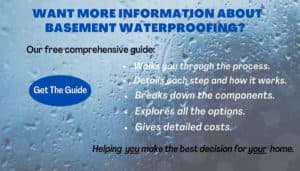Top 5 Ways to Avoid Foundation Problems

Originally posted 11/26/2018, updated 2/25/2021
There are a variety of potential threats to/ your home’s foundation stability. Many of these are out of your control: freezing temperatures, droughts, and heavy rains can all cause foundation damage. But this doesn’t mean you have to sit helplessly on your porch, waiting for the inevitable foundation cracks or settling to occur.
Based out of north central Indiana, Acculevel has been repairing foundations and waterproofing basements since 1996. We’ve seen just about every way a foundation can be damaged (both natural and man-made), and there are definitely steps that you can take to avoid the same fate. We’ve helped over 30,000 homeowners restore health and stability to their homes, and we want to do the same for you.
We’re going to outline five clear and decisive ways you can reduce the possibility of foundation damage to your home. We’ll provide links to additional information and resources that you might need, and some tools to help you meet your goals.
Landscaping
The first thing you should evaluate is the grading of your property. You don’t want the ground around your house to be level; you want it to slope gradually away from the house. This helps rainwater naturally drain away from your foundation. You should also evaluate the landscaping around the house; some types of border can trap water in puddles in the flower beds, which isn’t good for plants or your home.
You also need to be cautious when planting trees and shrubs. If you place these items too close to your house, the roots can cause serious damage. Roots grow wherever they can find moisture, and they can go through rock, brick, and concrete to find it- and they don’t care if it’s groundwater or sewer line.
If you have questions about grading or plant selection, we recommend you work with a professional landscaper. This is not our area of expertise, but we do have an article that will help you find a good contractor for this type of work.
Outside Drainage
Another way to protect your foundation is through your guttering system. It’s essential that you have a solid, functional gutter installed around the edge of the roof. This prevents rainwater from cascading directly onto the earth around your home, which will undo all the careful grading around your house.
You should also make sure your downspouts are in good working order, and that they are extended at least ten feet away from your foundation. Try to locate them in a place that doesn’t drain next to any concrete slabs (driveway, patio, walkways) because water can erode the soil under them and cause them to sink.
Have more questions about downspout extensions? We explain in greater detail why these are important and provide a DIY tutorial here.
Inside Drainage
Whether you have a basement or a crawl space, you need to make sure that space is dry. Even if you have an unfinished basement that you’re not planning to use, waterproofing it is a smart investment. Water seeping into your home is not just an inconvenience; it’s a sign that your foundation is struggling with hydrostatic pressure. This pressure is the primary cause for cracking, bowing, or leaning basement walls.
And if you have water in your crawl space, you will eventually have sagging floors. The flooring structure of your home is made of wooden components, and these are vulnerable to rot and decay in a damp environment. Waterproofing a crawl space is not just a way to protect your foundation and flooring; it’s also an excellent way to save significant repairs costs later. Sagging floor repairs can be more than triple the cost of waterproofing alone.
We have a detailed guide to basement waterproofing that I encourage you to bookmark as a home reference:
Moisture Levels
You may be wondering why I didn’t include humidity in the previous section about waterproofing. This is because waterproofing alone doesn’t always resolve a humidity problem. Do you live in an area with a high water table (near bodies of water)? Does your region experience extreme temperatures like the Midwest does, with summers in the 90 degree range with high humidity? Do you, or a family member, have a respiratory condition like asthma or allergies to mold? If so, you should also consider a quality dehumidifier for your entire home.
Installing a dehumidifier may be one the best things you can do for your overall health and the air quality in your home. Even perfectly healthy people can develop problems, if they are exposed to mold for an extended period of time. This is especially true for infants and children. And as we study pandemic-level illnesses, we are learning that controlling the humidity level could be a key part of the solution.

In this article, we review the benefits of a dehumidifier and how to determine which model is best for your home.
Inspect Your Foundation Twice a Year
In the words of a Greek philosopher, “the only constant is change.” The conditions of your house and property will evolve over time, and savvy homeowners perform regular check-ups of their homes. We have developed a DIY inspection checklist that we offer to all homeowners, free of charge.
Please use this checklist twice per year; we recommend spring and fall, to stay ahead of the more extreme weather conditions in the summer and winter. It will help you monitor the health and structure of your foundation, as well as verify that your guttering, sump pump, and other equipment is working properly.
The Next Step
If you’re ready to schedule an appointment with a contractor, we have a free downloadable list of questions to ask a contractor. This checklist can help you verify that a repair company is- or is not– the one you want to hire. We also strongly encourage you to check the Better Business Bureau before signing a contract, to verify the contractor is reputable, insured, and accredited.
Acculevel has been repairing foundations since our start in 1996. If you live in Indiana or the surrounding areas, please contact us for a free estimate.
We also invite you to make full use of our foundation repair guide. It’s available on this website for free, and you can bookmark it for future reference. Read just the sections that interest you, read the entire thing from start to finish, or use it to find additional resources that we offer.

